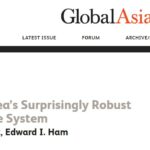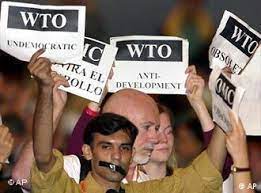Harvard study: North Korea takes the health of its citizens very seriously. The commitment is evidenced by constitutionally guaranteed free healthcare, a robust health workforce backed by a steady supply of trained personnel and sustained investment in health despite increasing military tension and sanctions. Original post here: https://www.globalasia.org/v16no3/cover/north-koreas-surprisingly-robust-healthcare-system_kee-b-parkedward-i-ham
By Kee B. Park, Edward I. Ham (Kee B. Park is Director of the Korea Health Policy Project at Harvard Medical School. Edward I. Ham is a research associate at the Korea Health Policy Project, Harvard Medical School.)
North Korea’s key health indicators stand out when compared to its economic peers. In 2019, life expectancy in North Korea was estimated at 72.3 years and the under-5 child mortality rate was 17.3 deaths per 1,000 live births — versus an average across low-income countries of 63.7 years and 67.6 deaths respectively.1 In most low-income countries, communicable diseases such as infections and mosquito-borne illnesses comprise a large portion of the disease burden. In North Korea, however, the leading causes of death are non-communicable diseases such as stroke, ischemic heart disease, chronic obstructive pulmonary disease and injuries — a pattern usually seen in wealthier countries. During the last decade under Kim Jong Un, geopolitical factors and ever-increasing coercive measures such as sanctions, have created a unique set of health challenges for the country.
In this essay, we analyze North Korea’s health system using the World Health Organization’s (WHO) Health Systems Building Blocks Framework. The six building blocks are: service delivery, financing, workforce, infrastructure, information management and governance. We then use North Korea’s response to the Covid-19 pandemic as a case study of the country’s ability to address a global public health crisis.
Health System Overview
Service Delivery. Article 15 of North Korea’s Constitution stipulates: “The state shall reasonably arrange and manage in an up-to-date way the hospitals and clinics throughout the city and rural community; factories; enterprises; seaside villages; forest villages; and shall establish specialized hospitals and sanatorium including midwifery hospitals, children’s hospitals in many places, and shall ceaselessly improve the level of specialized medical care in order for people to get treated whenever and wherever without inconvenience.”

North Korea’s healthcare system has four levels (see Table 1) and is able to provide a large array of services, including general medical and surgical care and public health programs.2 This was not always the case, however. After the Korean War, North Korea’s healthcare system grew rapidly and actually surpassed that of South Korea in the 1980s. In the 1990s, though, the fall of the Soviet Union and subsequent famine contributed to a deterioration of the healthcare system and rise in public-health challenges. Since the turn of the century, North Korean healthcare has gradually rebounded; with an emphasis put on public health services, there has been a steady rise in service access and an improvement in health outcomes. According to the 2016 WHO Country Co-operation Strategy report, there has been noticeable improvement in women’s and children’s healthcare access — specifically in emergency obstetric care, immunization and integrated management of childhood illness.3
As with most low- and middle-income countries, most higher-level services are concentrated in urban centers, such as Pyongyang, with access to complex health services in rural areas limited. Unlike them, however, North Korea faces an additional factor limiting the delivery of health services: fuel shortages due to sanctions. Fuel is vital for the day-to-day operations of a hospital, and indispensable for pre- and inter-hospital patient transportation and supply replenishment.
Financing. North Korea’s Public Health Law (Article 9) states: “The State provides every citizen with the benefits of complete free medical service. The workers, farmers, working intellectuals and all the rest of the citizens have the right to free medical treatment.” It is difficult to support or refute this claim due to the lack of data about the formal (and informal) costs of healthcare in North Korea. But a glance at the economic situation can provide insight into the hardships that the government has faced on a systematic level. In the 1990s, North Korea’s national economy was cut in half over a period of five years.4 While the economy slowly recovered from the early 2000s to 2015, the country has faced numerous financial challenges over the past five years. In 2016, China began to strictly enforce international sanctions and started to restrict trade with North Korea. This was a significant blow to North Korea’s economy as China is its main trading partner. In 2018, the total trade volume decreased by 48.8 percent,5 and the country’s real gross domestic product decreased by 4.1 percent, the lowest GDP growth rate since 1997.6 The Covid-19 pandemic has further exacerbated these issues, as all trade plummeted after the country’s self-imposed isolation.7 Without a stable economy, financing health-related endeavors becomes an uphill battle.
Despite these recent economic challenges, the government has continued to allocate significant funds toward healthcare under Kim Jong Un. In 2016, North Korea spent about 6.1 percent of its GDP on healthcare compared to an average expenditure of 5.4 percent for other low- and middle-income countries.8 Although much of the budget supports its large health workforce, there are several examples of direct health investments beyond salaries. For example, the government co-finances 15 percent to 30 percent of the cost for the longstanding national vaccination program with Gavi, the global vaccine alliance;9 it regularly imports medical supplies and drugs from China; 10 it recently built a medical oxygen production plant;11 and has invested significant resources in the construction of the Pyongyang General Hospital.12 Furthermore, one of the authors, Kee B. Park, has witnessed evidence of investments into the health sector during his many visits to North Korea, including the renovated operating rooms at the Pyongyang Medical College Hospital, domestically designed artificial knee joints and orthopedic implants, and an operating prototype of a CT scanner.
Workforce. North Korea has one of the highest healthcare workforce densities among all low-income countries. As of 2014, it had 87,780 physicians, 93,400 nurses, 7,368 midwives, 9,463 pharmacists and pharmaceutical technicians/assistants. 13 This translates to a ratio of around 3.5 doctors, 3.9 nurses and 0.3 midwives per 1,000 of the population. Furthermore, the number of allied health professionals continues to grow as “5,000 healthcare workers are nurtured every year in North Korea.’’14
There are 12 medical universities that offer six-year programs to become board-certified physicians. There are another 13 medical colleges to train fast-tracked physicians via a three- to four-year program whose graduates obtain a license without taking a state exam.15 They can provide patient care in limited settings and have restricted responsibilities. In addition, there is a pharmacy school and multiple two-year training programs for nurses, midwives and radiology technicians.16 The last component of the healthcare workforce is “hygiene physicians” such as nutritionists, hygiene experts and epidemiologists. Practitioners of oriental medicine are further classified as Koryo internal medicine specialists, Koryo surgeons, and Koryo pediatricians.
Infrastructure. North Korea has 133 provincial-level hospitals, 1,608 county-level hospitals and 6,263 clinics at ri (village) level.17 In addition, Pyongyang General Hospital is currently being built, with exterior portions completed last year.18 There are also 12 blood centers and a total of 235 hygiene and anti-epidemic health stations throughout the central, provincial and county levels.19 The specialized facilities located at the central level provide treatment for specific conditions such as tuberculosis, hepatitis and mental illness as well as specialty surgeries (i.e. ophthalmology and maternal health).
In recent years, North Korea has been manufacturing many of its medical supplies domestically. Furthermore, during the Covid-19 pandemic, a new medical oxygen plant was opened. That said, a lack of capacity and medication shortages have been a pressing issue. A North Korean sustainable development policy review document from June 2021 stated that “the lack of the capacity of health personnel, low technical foundation of pharmaceutical and medical appliance plants and shortage of essential medicines remain as challenges. Some of the pharmaceutical, vaccination and medical appliance plants do not reach [good manufacturing practices] level of WHO and [do] not meet the local demand as well.”20 Although the North Koreans did not elaborate on the effect of these medication shortages in the report, it likely poses a significant barrier to care. In addition, broken equipment restricts the services that local or visiting physicians can provide. During one of Kee B. Park’s last visits to the country, a broken intraoperative X-ray machine hampered his ability to perform complex spine surgeries.
Information management. In North Korea’s Medical Care Law (Article 49), the following stipulation is made: “The monitoring and controlling of health care services shall be conducted by the Health Guidance Agency and relevant monitoring and controlling agencies.” As a result of this regulation, North Korean healthcare providers keep very thorough and meticulous health records. The country’s internal mechanism for information reporting is shown in Figure 1. 21

North Korea’s national statistical office, the Central Bureau of Statistics (CBS), is in charge of collating the data from these records, and it also conducts surveys and censuses, such as UNICEF’s DPR Korea Multiple Indicator Cluster Surveys (MICS). However, some have questioned the accuracy of North Korea’s data. In recent years, the CBS has been working in co-operation with UNICEF to produce high-quality, verified data for their MICS reports. The CBS has shown a (selective) willingness to collaborate with international organizations when it comes to health data.
Governance. The Ministry of Public Health (MoPH) was one of the first organizations formed after the establishment of North Korea in 1948. Since its conception, there have been 10 ministers; the current Minister of Health is O Chun-bok. Historically, North Korea has focused on the development of a Juche-oriented health system focused on self-reliance. But since the devastating famine in the 1990s, there has been increased co-operation with international organizations such as the WHO, the United Nations Population Fund and UNICEF. The WHO country office was established in Pyongyang in 2001. Over the past two decades, the North Korean government has co-operated with various international organizations, and they have even signed up to multilateral health agreements, such as the WHO Framework Convention on Tobacco Control.
Kim Jong Un has been the supreme leader of North Korea since 2011. An analysis of government-written health editorials from 2012 to 2018 show that his regime puts a heavy focus on further developing medical and scientific technology.22 Areas of “medium” concern include disease control, maternal and child health, health-system strengthening and social determinants for health. The two areas of “least” concern were responding to emergencies/disasters and reproductive health services.23
In 2010, then WHO Director General Margaret Chan described North Korea’s healthcare system as “the envy of the developing world,” but she also acknowledged that “challenges remained, including poor infrastructure, a lack of equipment, malnutrition and a shortage of medicines.”24 In short, the system has many strengths — such as its robust workforce and attention to public health programs — but its main challenges include inaccessible health services for rural communities, a lack of medical equipment and medications, and financial constraints.
North Korea’s Response to Covid-19
North Korea faced its first pandemic in 2003, when Kim Jong Il was in power.25 Its neighbor, China, faced devastating secondary consequences from the Severe Acute Respiratory Syndrome (SARS) virus. When news of the virus first emerged, North Korea immediately cancelled flights, restricted travel and implemented strict quarantine procedures. The SARS was over within a year and the country celebrated its success in preventing the virus from entering.
In 2014, a major Ebola outbreak in West Africa caused enough concern for Kim Jong Un’s regime to halt tourism and subsequently outbound travel, as well as impose a 21-day quarantine.26 While the SARS response appeared appropriate to the threat in scope and timing, the Ebola response seemed excessive given the limited geographic spread of the virus, mostly in Africa. North Korea’s current pandemic strategy contains elements that suggest a near complete intolerance to any risk of the virus crossing its borders. For Kim Jong Un, protection of his people from the coronavirus is a matter of national survival. The main objective of North Korea’s strategy is to prevent the virus from getting into the country while simultaneously strengthening its treatment capabilities and acquiring vaccines.
The best way to keep the virus out is by sealing the border. North Korea took aggressive measures in late January 2020 by stopping inbound flights. Then, a few days later, the borders were closed even before the Chinese locked down Wuhan. The border closures were accompanied by a comprehensive public education campaign. News about the pandemic, such as information on masking, hygiene and symptoms to watch for, was broadcast regularly on TV and in newspapers. Citizens were also warned to avoid contact with anything coming from outside. People and objects from South Korea were met with drastic responses. For example, when a South Korean apparently tried to defect to North Korea by swimming, he was shot and burned at sea, rather than taken into custody. When leaflets were sent over the demilitarized zone in balloons last year, North Korea blew up the liaison center in the DMZ. The leaflets were seen as a potential biological weapon, rather than simple propaganda. The country is also able to isolate suspected cases efficiently, effectively minimizing the risk of unmitigated spread in case of an outbreak. The country gets high marks for its public-health measures.
While public-health measures are paramount during a pandemic, countries also need to increase treatment capacity and capabilities. North Korea recognizes the current limitations of its healthcare system as it relates to the medical treatment of severe respiratory diseases in large populations. A public announcement was made of the decision to construct a large general hospital in Pyongyang in March 2020. Although the buildings appear to be complete, the hospital has yet to open for patients. Articles featuring a new medical equipment factory and the new medical oxygen facility suggest attempts to increase the country’s medical countermeasures.
Given North Korea’s all-of-government, comprehensive approach, the country has likely succeeded in keeping the virus out. This belief is supported in part by a number of large-scale public gatherings over the last year, some without masks, that indicate a high confidence level in preventing the virus from entering. From a prevention point of view, this is a triumph. But this success comes with steep costs to the economy and to the health of the most vulnerable populations in the country. The disruption of the supply chain, already weakened by sanctions, likely degraded the healthcare system further. When the loss of humanitarian programs is added, the human cost of non-Covid-related illnesses is expected to be high. To alleviate any more damage to its economy or to the health of its people, North Korea will need to reopen its borders. Vaccines are an indispensable tool in any reopening strategy.
Access to Vaccines
COVAX, a partnership consisting of vaccine alliance Gavi, the WHO and the Coalition for Epidemic Preparedness Innovation (CEPI), represents the best international effort to give the poorest countries access to Covid-19 vaccines. The WHO, serving as a technical partner, is tasked with approving the available vaccines for safety and efficacy; Gavi serves as the procurement and logistics partner; CEPI is the vaccine development partner. These three organizations have come together with the aim of providing enough vaccine to cover up to 20 percent of the population in the poorest countries through its COVAX Advanced Market Commitment (AMC) program, funded through donations from high-income countries and large philanthropic organizations. North Korea is eligible for the program and submitted its application to participate before the deadline in December 2020.
Gavi, which has been providing various vaccines to North Korea for almost two decades, approved North Korea’s application for the COVAX AMC program. The country then submitted its National Deployment and Vaccination Plan earlier this year, and the WHO Southeast Regional Office subsequently approved the plan.
North Korea has the infrastructure to store and transport the vaccines in an uninterrupted cold temperature environment (cold-chain) and the ability to rapidly implement a nationwide vaccination program. For years, North Korea has achieved 97-98 percent country-wide vaccination rates in children using vaccines with cold-chain requirements identical to the AstraZeneca/Oxford vaccine. UNICEF and the WHO work closely with the North Korean National Immunization Program to maintain the cold-chain infrastructure and distribution network. During a 2008 measles outbreak in North Korea, the country managed to average more than 3 million vaccine injections per day, a surprisingly high rate for a low-income country.27 This operational efficiency gives the country options in terms of vaccines they could accept from COVAX. For example, the mRNA vaccines typically require freezers for storage; therefore, many assumed these would be impractical for developing countries. However, certain mRNA vaccines, such as Pfizer’s and Moderna’s, can be stored in refrigerators for up to 30 days. Given North Korea’s ability to rapidly roll out vaccines, mRNA vaccines may be an option for the country if the distribution is limited to a single city, such as Pyongyang. On the other hand, the AstraZeneca/Oxford vaccines are a feasible option for nationwide disbursement via the existing cold-chain infrastructure.
North Korea is likely able to develop and manufacture certain types of vaccines. The new mRNA vaccines require advanced technology for nucleotide manipulation as well as sophisticated delivery technology. Thus, most low-income countries are unable to develop and manufacture these vaccines domestically. But North Korea possesses the gene-splicing skills necessary to develop viral vector vaccines, like the AstraZeneca/Oxford vaccine, and it is conceivable that it could reproduce the vaccines if given proper instructions. A key factor to consider is the inability to test the vaccine for safety and efficacy in North Korea because there are no cases of Covid-19 in the country. A steady rate of new infections is needed to see any difference in infection rates between the vaccinated and the placebo group. A workaround would be to partner with a country that is experiencing ongoing new infections.
Conclusion
North Korea takes the health of its citizens very seriously. The commitment is evidenced by constitutionally guaranteed free healthcare, a robust health workforce backed by a steady supply of trained personnel and sustained investment in health despite increasing military tension and sanctions. North Korea’s unparalleled tenacity to isolate during pandemics has proved to be effective in preventing the spread of Covid-19 into the country, but the economic and human costs are mounting. A path to reopening its borders will require vaccines and co-operation with international organizations.
Notes
1 United Nations Population Division, World Population Prospects (2019 Revision), via World Bank Open Data, World Bank Group. Life expectancy rates: data.worldbank.org/indicator/SP.DYN.LE00.IN?locations=KP; Under-5 mortality rates: data.worldbank.org/indicator/SP.DYN.LE00.IN?locations=KP
2 “WHO Country Co-operation Strategy: Democratic People’s Republic of Korea: 2014-2019,” World Health Organization, 2016, pp. 18, 21.
3 ibid., pp. 52-58.
4 John Grundy and Rob Moodie. “An approach to health system strengthening in the Democratic People’s Republic of Korea (North Korea).” The International Journal of Health Planning and Management, Vol. 24 No. 2 (2009), pp. 113-129.
5 Korea Trade-Investment Promotion Agency, “Trends in North Korea’s Foreign Trade,” 2018.
6 “Gross Domestic Product Estimates for North Korea in 2018,” Bank of Korea press release, 2019, at www.nkeconwatch.com/nk-uploads/GDP_of_North_Korea_in_2018.pdf
7 Hyonhee Shin, “Factbox: North Korea’s economy struggles as sanctions, COVID-19 weigh,” Reuters, Jan. 7, 2021, at www.reuters.com/business/aerospace-defense/north-koreas-economy-struggles-sanctions-covid-19-weigh-2021-01-07/
8 “WHO Country Co-operation Strategy,” p. 32.
9 Nagi M. Shafik, C. Yoonhee Ryder, and Kee B. Park, “North Korea’s Vaccination Capabilities: Implications for a COVID-19 Campaign,” 38 North, Aug. 5, 2021, www.38north.org/2021/08/north-koreas-vaccination-capabilities-implications-for-a-covid-19-campaign/
10 Jacob Fromer, “China exported $50 million in medical supplies to North Korea in 2019: data.” NK News, Feb. 19, 2020, www.nknews.org/2020/02/china-exported-50-million- in-medical-supplies-to-north-korea-in-2019-data/
11 International Friendship Initiative, “Medical Oxygen Factory,” Explore DPRK, Sept. 22, 2017, at exploredprk.com/articles/medical-oxygen-factory/
12 Martyn Williams and Peter Makowsky, “Construction in Pyongyang: The General Hospital and More,” 38 North, June 9, 2020, www.38north.org/2020/06/pyongyang060920/
13 “WHO Country Co-operation Strategy,” p. 19.
14 Song Soo-youn, “N. Korea has 3.3 doctors per 1,000 people, similar to S. Korea,” Korea Biomedical Review, May 2, 2018, www.koreabiomed.com/news/articleView.html?idxno=3160
15 Ibid.
16 Ibid.
17 “WHO Country Co-operation Strategy,” p. 21.
18 Williams, “Construction in Pyongyang.”
19 “WHO Country Co-operation Strategy,” p. 21.
20 “Voluntary National Review: On the Implementation of the 2030 Agenda for Sustainable Development,” Government of the Democratic People’s Republic of Korea, June 2021, p. 20.
21 “WHO Country Co-operation Strategy,” p. 22.
22 Shin, Bo Kyung and Woo Taek Jeon, “National Health Priorities under the Kim Jong Un regime in Democratic People’s Republic of Korea (DPRK), 2012-2018,” BMJ Global Health, No.4, Suppl 7 (2019): e001518.
23 Ibid.
24 “Aid agencies row over North Korea health care system.” BBC News, July 20, 2010, www.bbc.com/news/world-asia-pacific-10665964
25 “DPRK Monthly Update — April 2003,” World Food Programme, April 3, 2003, at reliefweb.int/report/democratic-peoples-republic-korea/dprk-monthly-update-apr-2003
26 “North Korea to quarantine all foreigners because of Ebola fears,” The Guardian, Oct. 30, 2014, www.theguardian.com/world/2014/oct/30/north-korea-quarantine-foreigners-ebola
27 Nagi M. Shafik, C. Yoonhee Ryder and Kee B. Park, “North Korea’s Vaccination Capabilities: Implications for a COVID-19 Campaign,” Aug 5, 2021, 38North, www.38north.org/2021/08/north-koreas-vaccination-capabilities-implications-for-a-covid-19-campaign/




